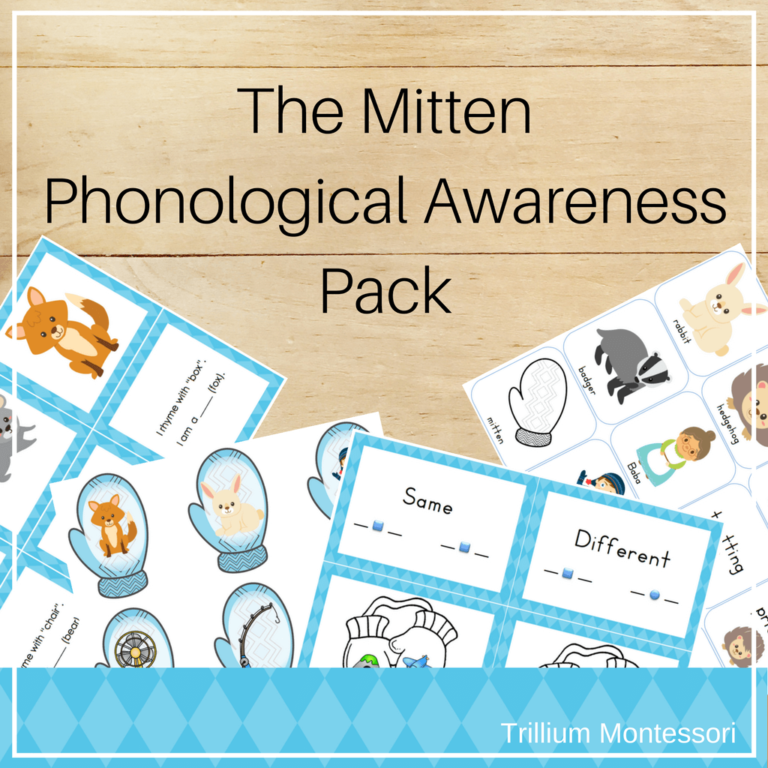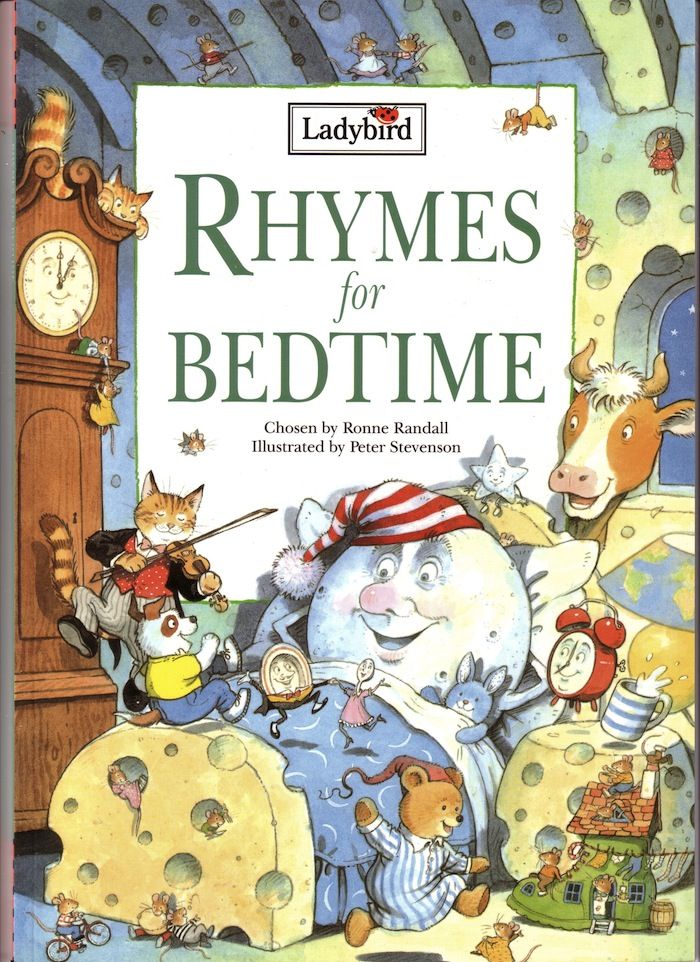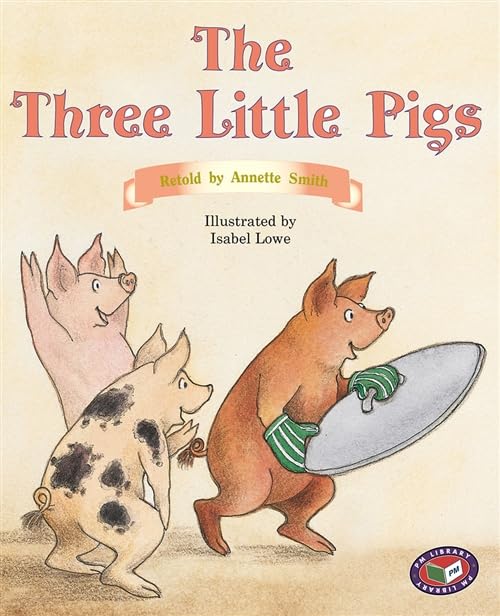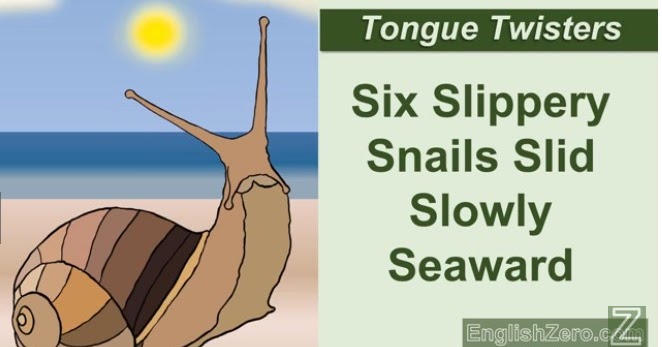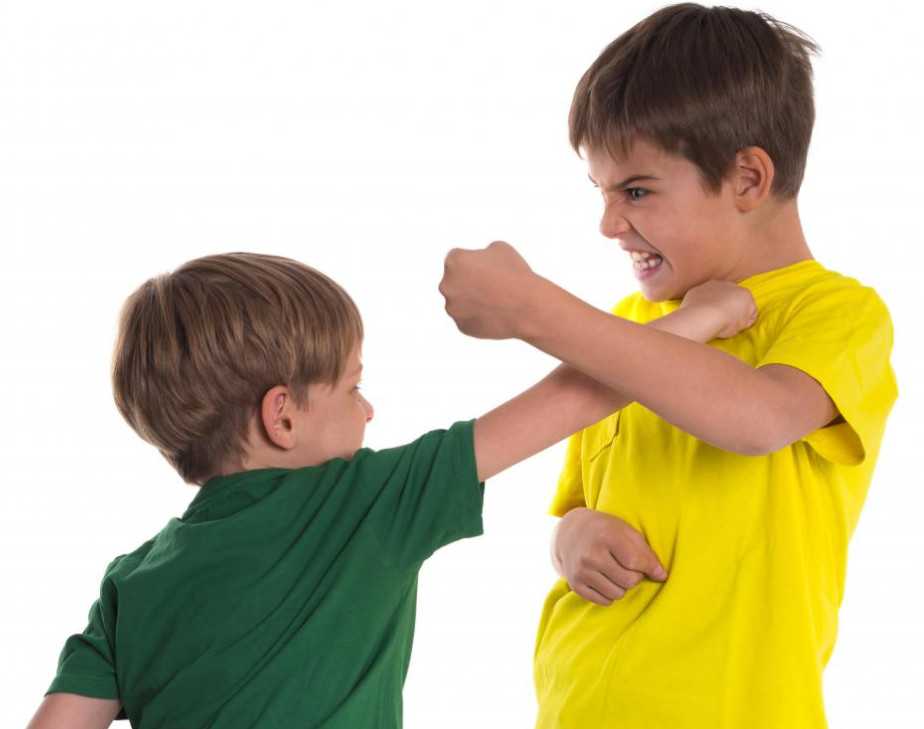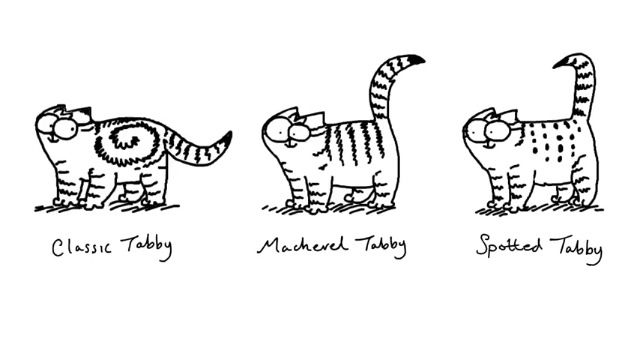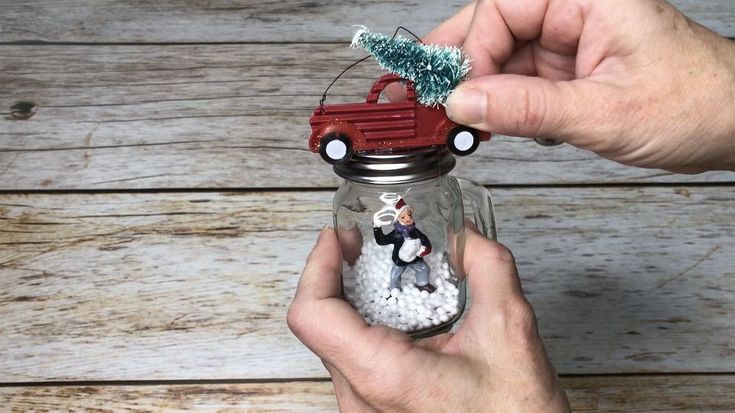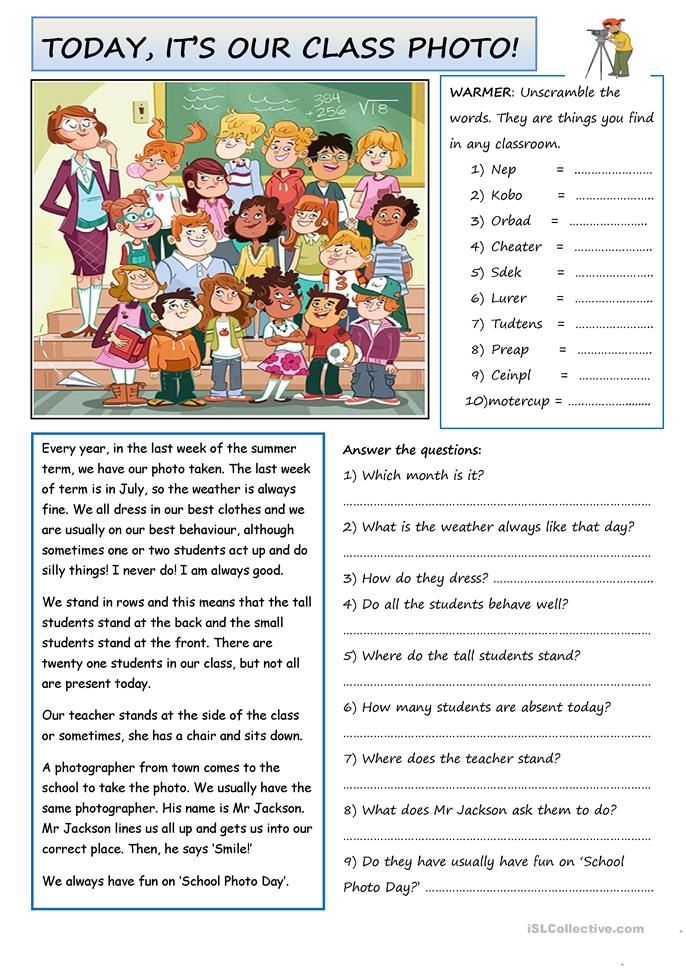Phonological awareness preschool activities
Phonological and Phonemic Awareness: Activities for Your Pre-K Child
That's a complicated sounding term, but it's meaning is simple: the ability to hear, recognize, and play with the sounds in spoken language. Phonological awareness is really a group of skills that include a child's ability to:
Strong phonemic awareness is one of the strongest predictors of later reading success. Children who struggle with reading, including kids with dyslexia, often have trouble with phonemic awareness, but with the right kind of instruction they can be successful. Learn some of the warning signs for dyslexia in this article, Clues to Dyslexia in Early Childhood.
For pre-K children, the focus is on rhyming, alliteration, syllables, and beginning sounds. Parents can make a big difference in helping their children become readers by practicing these pre-reading oral skills at home. Try some of the simple rhyming and word sound games described here.
Why phonemic awareness is the key to learning how to read
This video is from Home Reading Helper, a resource for parents to elevate children’s reading at home provided by Read Charlotte. Find more video, parent activities, printables, and other resources at Home Reading Helper.
Try these speech sound activities at home
Rhyme time
“I am thinking of an animal that rhymes with big. What's the animal?” Answer: pig. What else rhymes with big? (dig, fig, wig)
Body part rhymes
Point to a part of your body and ask your child to think of a rhyming word. For example, what rhymes with hair? (bear). What rhymes with eye? (pie) What rhymes with head? (bed). Make it more challenging by asking for two or three rhyming words. Nonsense words count, too!
Read books that play with sounds
Try these books featuring rhyme, alliteration, and more:
- All About Arthur (An Absolutely Absurd Ape)
- Alphabears
- Animalia
- Buzz Said the Bee
- Catch a Little Fox
- Each Peach Pear Plum
- A Giraffe and a Half
- The Hungry Thing
- Jamberry
- See You Later Alligator
- Sheep in a Jeep
- Yours Till Banana Splits
- Zoophabets
Clap it out
Practice listening for syllables.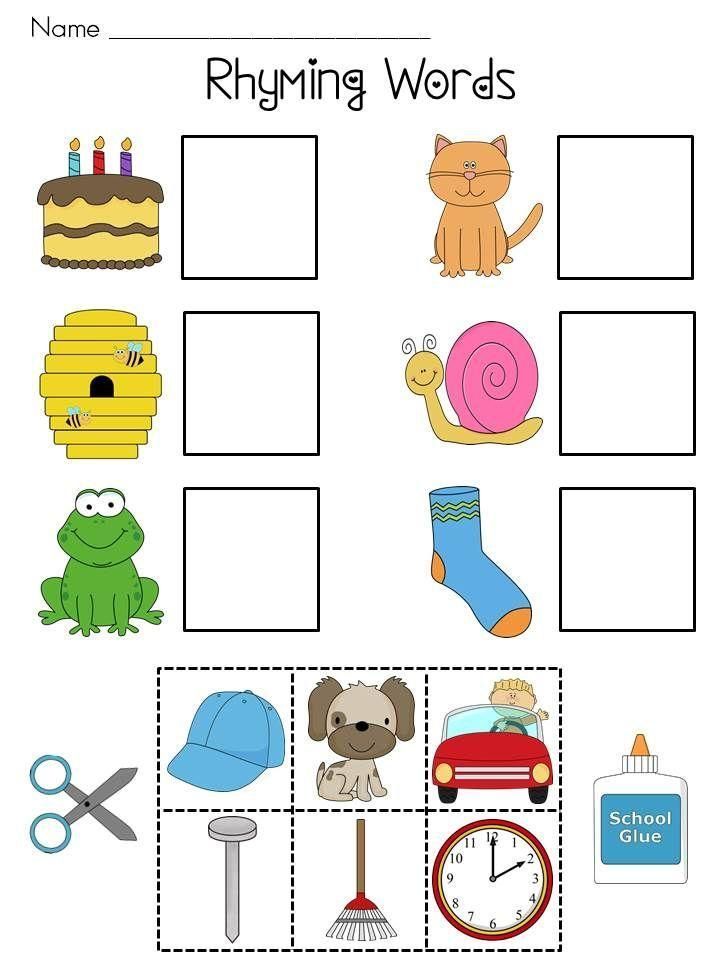 Explain to your child that syllables are the big chunks in words as you say them: some words have one syllable (hat), some have two (apple), and some have three or more (banana).
Explain to your child that syllables are the big chunks in words as you say them: some words have one syllable (hat), some have two (apple), and some have three or more (banana).
You can actually feel syllables! Have your child put her hand under her chin and say the word slowly so she can feel when her mouth goes down. Be sure to explain that each time her chin goes down, she’s saying another syllable or part of the same word.
Think of everyday words your child knows (for example: apple, baby, toothbrush). Tell your child that you'll both clap the number of syllables in each word. Show her how to clap one time as you say each syllable: /ap/ (clap) /ple/ (clap). Try it with more words. Kids also love clapping their name!
Tongue ticklers
Alliteration or "tongue ticklers" — where the sound you're focusing on is repeated over and over again — can be a fun way to provide practice with a sound. Try these:
- For M: Miss Mouse makes marvelous meatballs!
- For S: Silly Sally sings songs about snakes and snails.
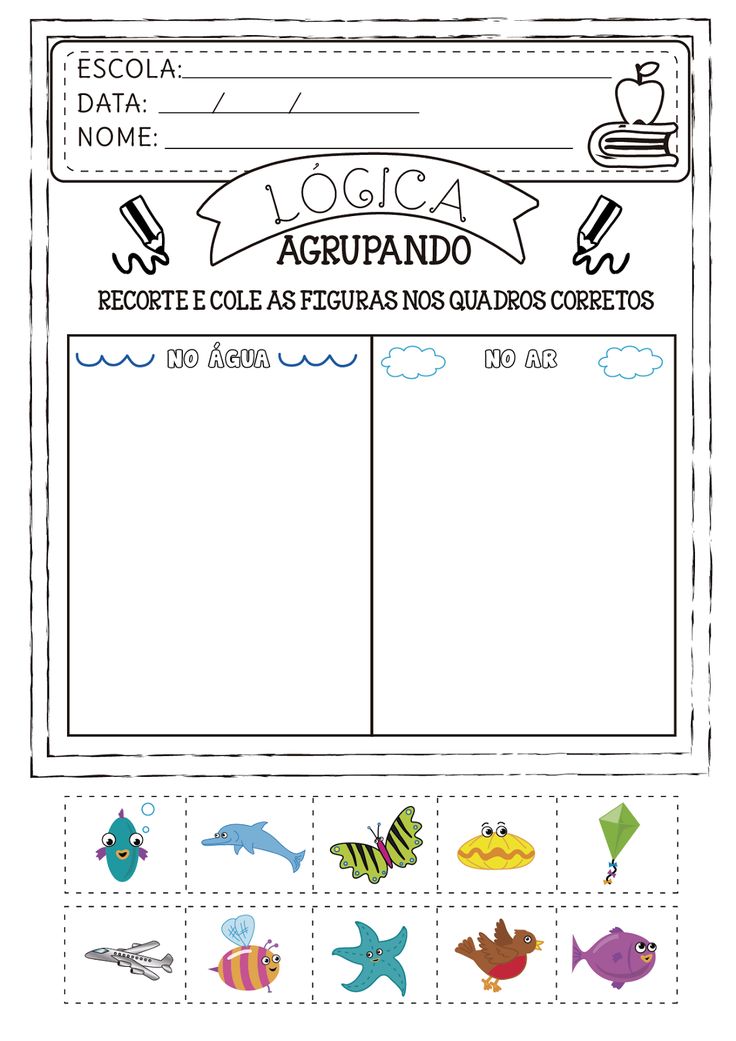
- For F: Freddy finds fireflies with a flashlight.
"I Spy" first sounds
Practice beginning sounds with this simple "I spy" game at home, on a walk, or at the grocery store. Choose words with distinctive, easy-to-hear beginning sounds. For example, if you're in the bathroom you can say, “I spy something red that starts with the "s" ssss sound (soap).”
Which letter sounds do I teach first?
Reading expert Linda Farrell recommends that you begin with teaching the letter names, and then focus on the letter sounds that are closest to their letter names (such as /v/). And here's a great tip for teaching the trickier letter name–letter sound combinations — use arm motions. In this video, Linda demonstrates motions for /x/ and /y/. (From our video series Reading SOS: Expert Answers to Family Questions About Reading.)
Sound scavenger hunt
Choose a letter sound, then have your child find things around your house that start with the same sound. “Can you find something in our house that starts with the letter “p” pppppp sound? Picture, pencil, pear”
Rhyme boards
Try this activity from the Florida Center for Reading Research (FCRR). The FCRR "At Home" series was developed especially for families! Watch the video and then download the activity: Rhyme Boards. See all FCRR phonological awareness activities here.
Rhyming A-LOT-OH!
Try this activity from the Florida Center for Reading Research (FCRR). The FCRR "At Home" series was developed especially for families! Watch the video and then download the activity: Rhyming A-LOT-OH!.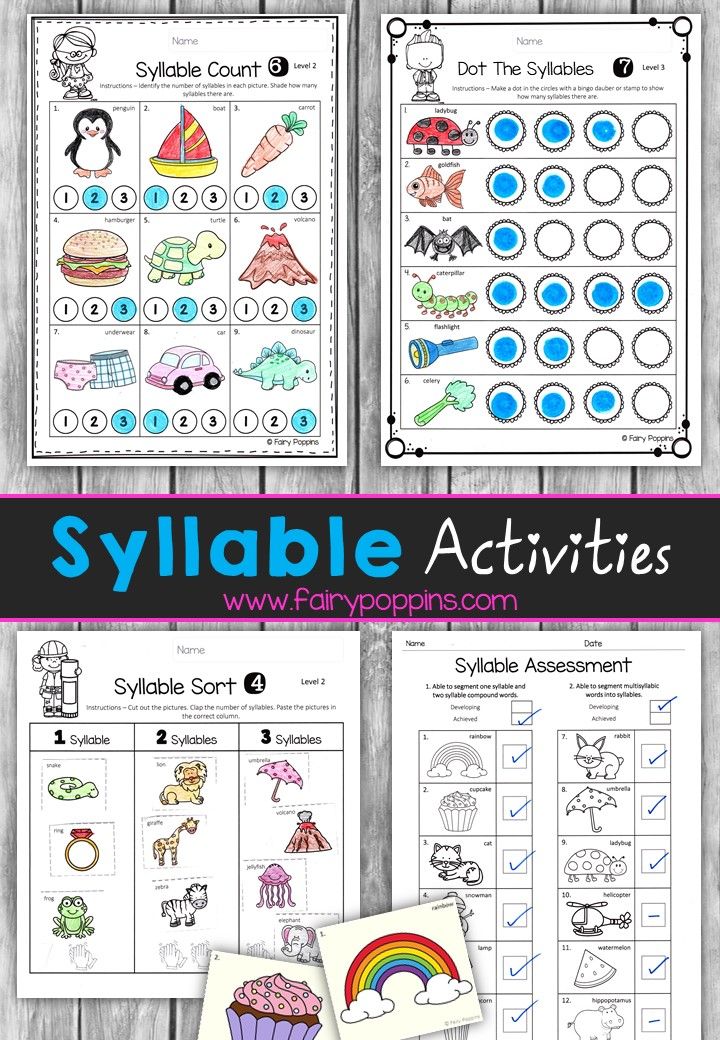 See all FCRR phonological awareness activities here.
See all FCRR phonological awareness activities here.
More phonological and phonemic awareness resources
20 Fun Phonemic Awareness Activities for Preschoolers
// by Sharayah Lynn Grattan
When we are young, we learn sounds and words in various ways. Usually, we hear a word and register it to the meaning of an action or object. Phonemic awareness is the understanding of how words/sounds can break down and build-up, and is very important when it comes to learning how to read.
Toddlers can benefit from different exercises and activities that break down words into segments, syllables, and sounds. From there they can learn each part's meaning and grow in their understanding of language.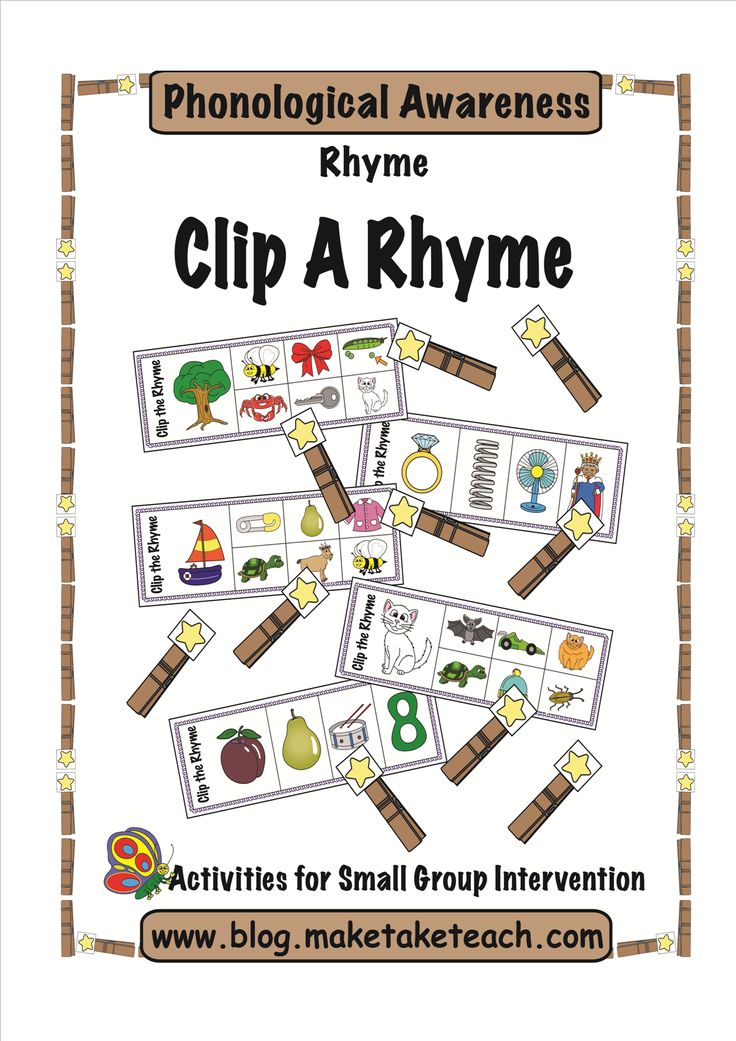 Here are 20 of our favorite games and activities to improve foundational literacy skills as well as critical pre-reading skills in toddlers.
Here are 20 of our favorite games and activities to improve foundational literacy skills as well as critical pre-reading skills in toddlers.
1. Listening With Closed Eyes
One of the first phonemic awareness skills preschoolers can work to improve is their ability to recognize single sounds. Focusing attention on what you hear is the first phase of breaking down and registering each phoneme. Have your students close their eyes in class and say the sounds they hear.
Learn more: Teach Starter
2. Phoneme Snowmen
Word segmentation is a great practice in learning how phonemes work and sound together. You can find these cute printable flashcards of different images or make your own. Next, grab some cotton balls and use them to count the letter combinations that make up each word.
Learn more: Fantastic Fun and Learning
3. Barrier Game
Collect some familiar objects around the classroom and put up a barrier so your students cannot see them.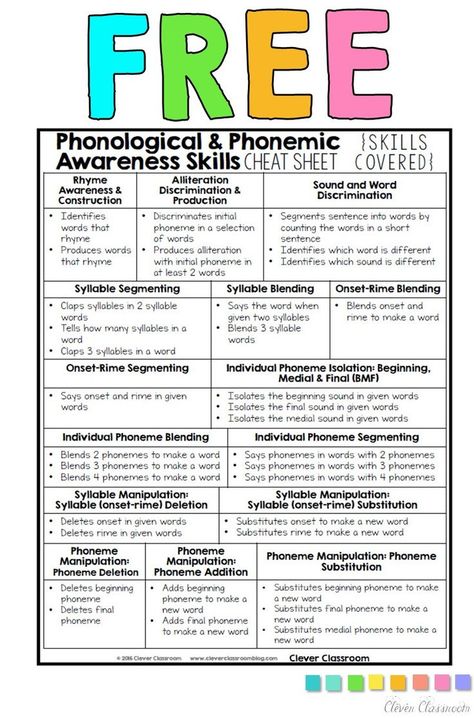 This listening game is excellent practice for learners to block out and separate sounds between those that are ambient and those that are important. Try using objects they hear regularly so students don't get frustrated or discouraged.
This listening game is excellent practice for learners to block out and separate sounds between those that are ambient and those that are important. Try using objects they hear regularly so students don't get frustrated or discouraged.
Learn more: Teach Phonics
4. LEGO Word Building
One hands-on learning tool that combines letter sounds and motor skills is segmenting and blending words using LEGOs. Start off with simple 2-3 letter words and have your students break apart the pieces and say the letter names, then put the blocks together to make each word.
Learn more: A Teachable Teacher
5. Letter Sounds Tic Tac Toe
For this sound game, print out some picture cards, grab some yarn, and make a tic tac toe board on the floor. You can choose to focus on initial sounds or ending sounds depending on what your learners are struggling with.
Learn more: This Reading Mama
6. Similarities and Differences Game
Get your preschoolers up and moving with this fun game that improves phonological awareness.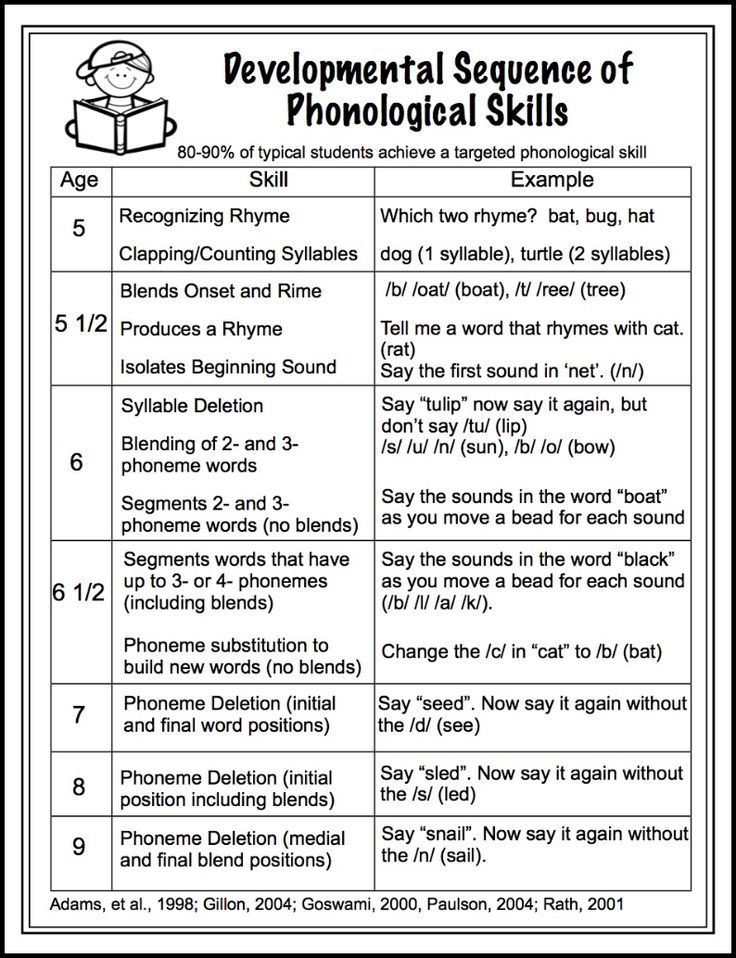 Place 3 hula hoops on the floor and choose 3 words your students are familiar with. Each word is represented by a hula hoop. Once you've said the words, the students must jump into the hula hoop of the word that sounds different than the other 2.
Place 3 hula hoops on the floor and choose 3 words your students are familiar with. Each word is represented by a hula hoop. Once you've said the words, the students must jump into the hula hoop of the word that sounds different than the other 2.
Learn more: Teach Starter
7. Rhyming Riddles
Let's focus on identifying individual sounds in a word. Ask your students for simple word corrections where one sound is off. For example, "Who do you see if you are sick?" "Poctor?". Your students can then answer and say "no, doctor!".
Learn more: Tejedastots
8. Word Formation Bracelets
Props, crafts, and games are useful strategies for building a strong foundation of language in your preschoolers. These learning bracelets made from pipe cleaners and beads are a fun and interactive way for students to visualize combinations of letters and practice putting them together.
Learn more: A Teachable Teacher
9.
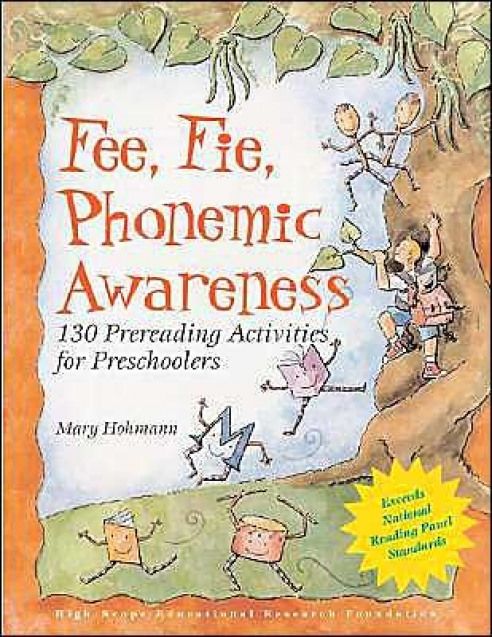 Word Sorting With Pictures
Word Sorting With Pictures Every word has a certain number of sounds and letters. You can use these free printable candy jars and images to play an activity that relates phonemes to letters, then counts and categorizes them.
Learn more: Fantastic Fun and Learning
10. Mystery Bag Game
Kids love mystery! This fun learning experience not only improves students' letter recognition but also expands their vocabulary. Place small familiar items in a bag, and plastic letters for the items' initial sounds. Each item your toddler pulls from the bag they must put in the correct phoneme column.
Learn more: Pinay Homeschooler
11. Sound Identification Signs
Simple and effective, you can make these letter signs yourself with popsicle sticks and letter printouts. Start off by asking your kiddos to identify the initial sound/letter, then once they understand the game, you can make it more challenging by asking for the middle sound or ending sound.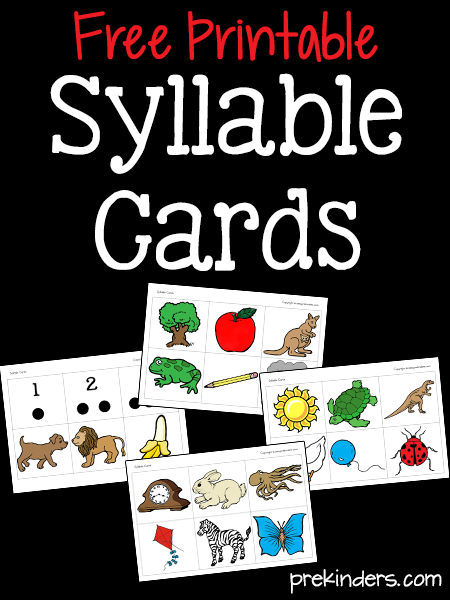
Learn more: Easttn Family Fun
12. The Hungry Thing
This is a children's book teaching phoneme awareness skills through the struggles of a hungry monster who speaks a language where he changes the first sound in his words. You can do a read-aloud of the book and practice with the examples used as well as some of your own.
Learn more: Amazon
13. Partners in Rhyme
Did you know there is an app you can download for free onto your smart device that helps kids learn phonemic awareness? The app uses rhyming words and images to test kids' understanding of sounds and letters.
Learn more: Apple
14. Sound Blending Song
The pattern of the song is the same melody as "If you're happy and you know it, clap your hands", but the words are "If you think you know this word, shout it out!". Once you've gone through the verse, spell out some easy words and have your students say the words back.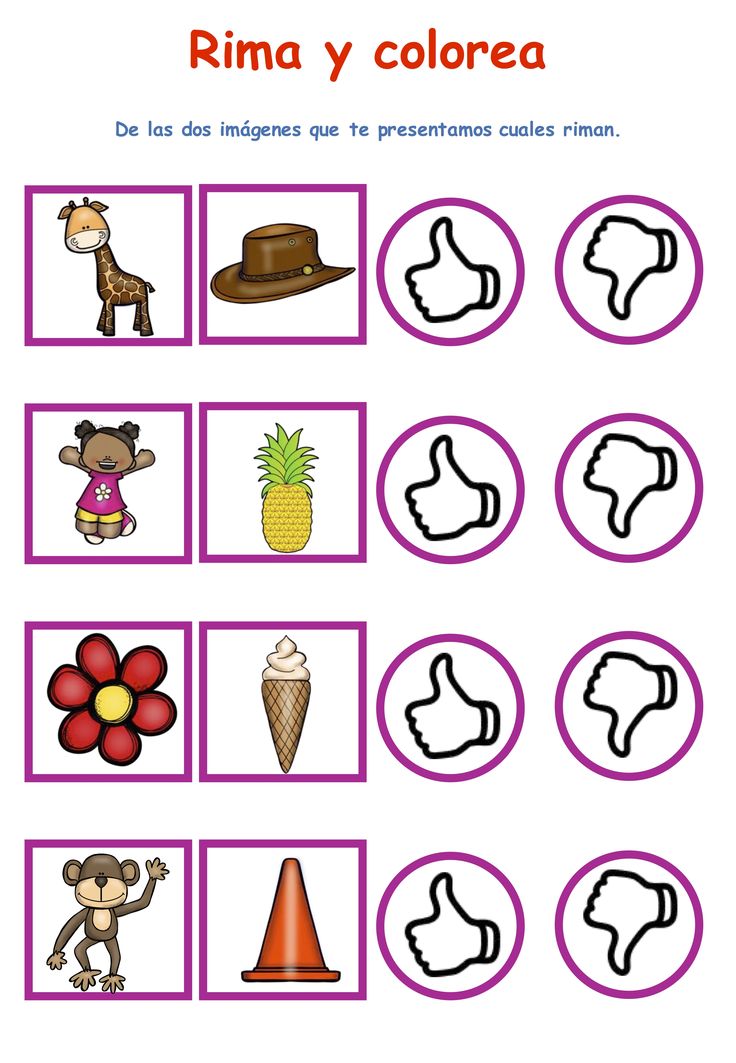
Learn more: Simply Kinder
15. Around the Room
Ask your students to think of the initial sound in their name, then have them look for an object in the classroom that starts with the same sound. This will get your kids thinking and moving in a fun and interactive way!
Learn more: Tejedastots
16. Phoneme Rhyming Bingo
Print out some bingo cards with images of familiar objects your students will recognize. When playing the game instead of saying the names of the objects, say words that rhyme with them. For example, instead of saying "car" say "far".
Learn more: Carls Corner
17. Feed the Unicorn
You can find this activity bundle with tons of rhyming and sound recognition games your preschooler will love!
Learn more: Pre-k Pages
18. Initial Letter Sound Scavenger Hunt
You can get creative with how you want to arrange your scavenger hunt. Each egg has pictures of objects your students need to match with the initial phoneme on the dinosaur picture. Hide the eggs around the classroom or place them in a sensory bin.
Each egg has pictures of objects your students need to match with the initial phoneme on the dinosaur picture. Hide the eggs around the classroom or place them in a sensory bin.
Learn more: Fantastic Fun and Learning
19. Playdough Stamps
Here's a super fun language game that uses motor skills, color and sound recognition, and memory skills. You'll need some cookie cutters in the shape of various familiar objects and letter stamps. Have your preschoolers take turns shaping the playdough and stamping it with the initial and ending letters.
Learn more: Modern Preschool
20. Matching Animals and Foods
Hopefully, you have some toy animals and food items in your classroom you can use for this phonemic awareness activity. First, have your kids categorize the animals based on their initial phonemes. Then, ask them to do the same thing with food items for extra practice and to improve their phonemic awareness skills.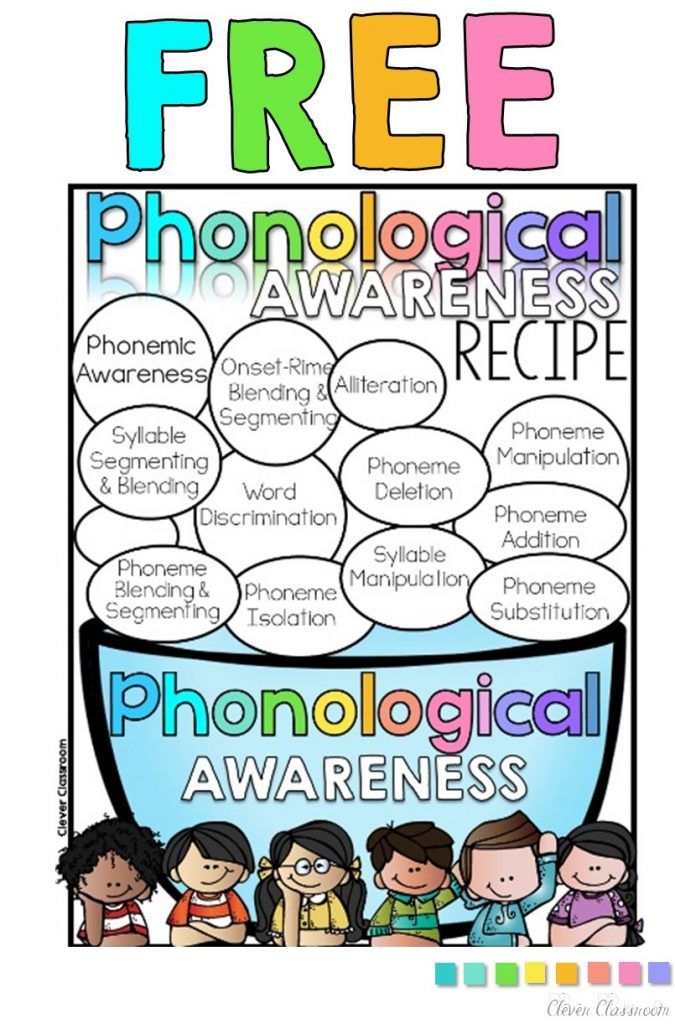
Learn more: The Playbased Mom
Related posts:
Category: Classroom Ideas
Early childhood literacy
Preschoolers learn a lot about written language long before they learn to read and write in traditional ways. And this is quite natural: children live in a world full of written symbols. Every day they observe and themselves take part in various activities related to books, calendars, lists and inscriptions. Gradually, they learn to understand how written symbols convey meaning. Children's active efforts to develop literacy skills through informal experiences are called emergent literacy.
Younger preschoolers look for familiar elements of written speech when they “read” fairy tales that they remember and recognize familiar inscriptions. However, they do not yet understand the symbolic function of the printed word. Many preschool children believe that one letter stands for a whole word. At first, they do not even distinguish between drawing and writing.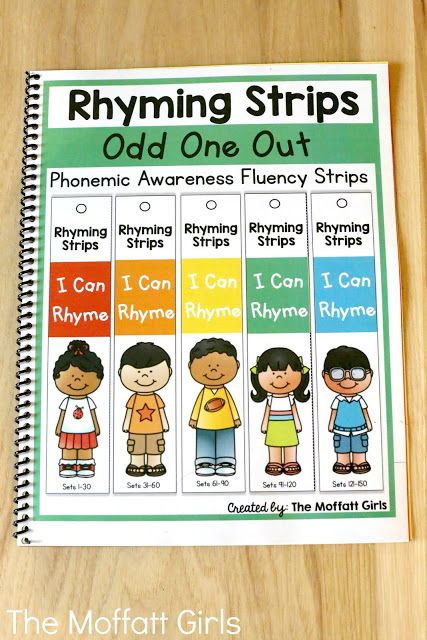 Around the age of four, some of the distinctive features of block text appear in their writing, such as the alignment of figures. However, at the same time, children often use drawing elements - for example, write the word "sun" with a yellow felt-tip pen or draw it in the form of a circle. They express their understanding of the symbolic function of drawings in the “drawing” of letters.
Around the age of four, some of the distinctive features of block text appear in their writing, such as the alignment of figures. However, at the same time, children often use drawing elements - for example, write the word "sun" with a yellow felt-tip pen or draw it in the form of a circle. They express their understanding of the symbolic function of drawings in the “drawing” of letters.
The development of literacy skills is based on speaking and knowledge of the world around. Over time, children's progress in language acquisition and literacy skills begin to support each other. Phonological awareness, that is, the ability to analyze and use the sound structure of colloquial speech, which is evidenced by sensitivity to changes in the sounds that make up words, as well as to rhyme and mispronunciation, is considered an indicator of advanced emergent literacy. Combined with an understanding of the correspondences between sounds and letters, this ability allows children to isolate fragments of speech and associate them with the corresponding written characters.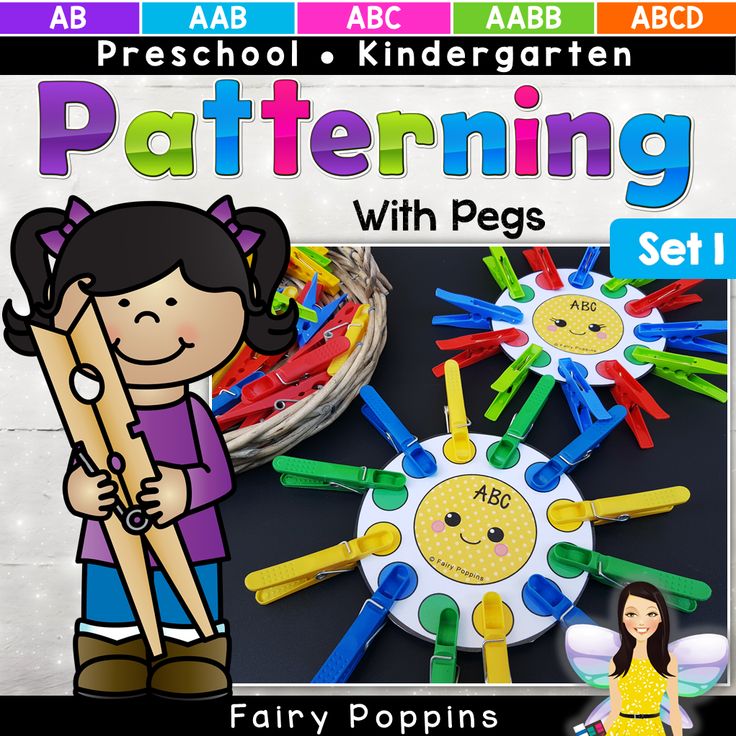 Vocabulary and grammatical knowledge also play an important role in this process. In the course of story conversations between an adult and a child, various speech skills are improved, which are of great importance for the development of literacy.
Vocabulary and grammatical knowledge also play an important role in this process. In the course of story conversations between an adult and a child, various speech skills are improved, which are of great importance for the development of literacy.
The more informal opportunities for learning literacy skills that preschool children have, the better their speech and emergent literacy, and subsequently their reading skills, are developed. By drawing children's attention to the fact that letters stand for sounds, by playing games with speech and sounds, adults increase children's awareness of the sound structure of speech and how it is displayed in written text. Interactive reading and discussion of the content of the book with preschoolers stimulates different aspects of the development of speech and literacy skills. Children benefit greatly from adult help with writing assignments in the form of a composition, such as writing a letter or a story.
Read about how to support self-learning in early childhood literacy in the Idea Fair section.
Based on materials from the book "Child Development" by Laura Burke.
Phonological games for preschoolers | Skyteach
3630
7
Before learning to swim, children get used to the water, learn to breathe correctly, and train to lie on the water. In the same way, before learning to read, a preparatory stage is needed - the child must learn to distinguish sounds and control them. This is called phonological awareness.
The development of phonological awareness includes the following steps:
- separating words in a sentence by ear;
- selection of rhyming words;
- distinguishing syllables in words;
- onset recognition and roman. Onset is the initial phoneme in a word, and rima is the sounds following the onset. For example, in the word dog d is onset, and og is rima;
- identification of phonemes in words;
- fusion and separation of phonemes.
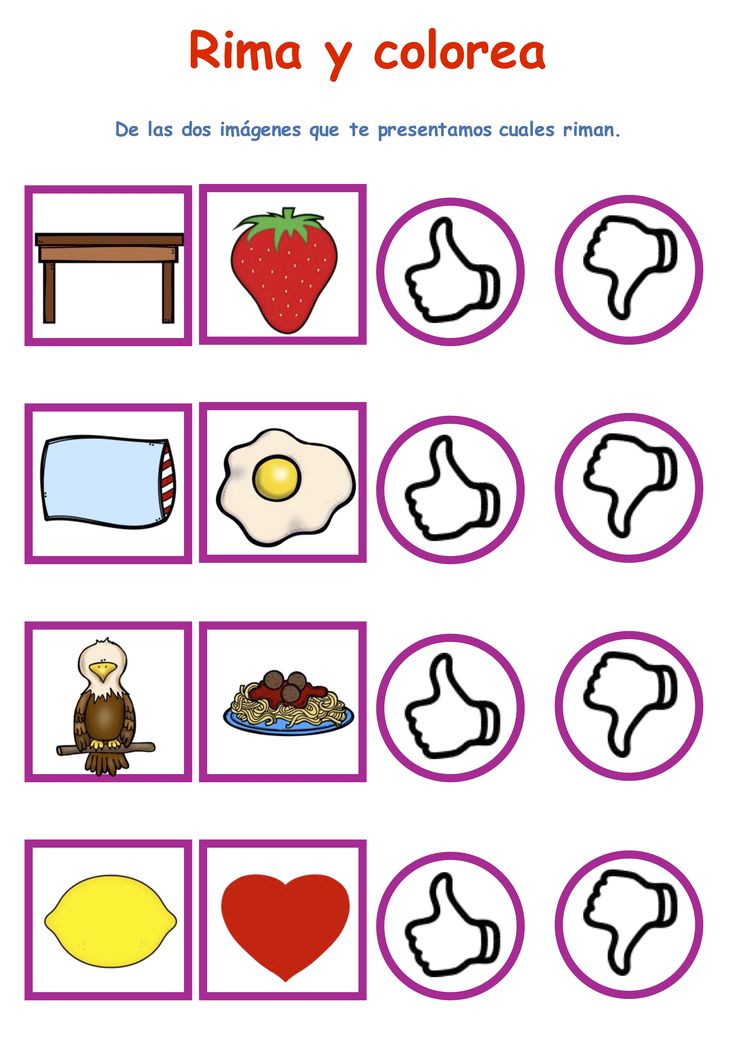
I will tell you how to develop phonological awareness through games. The games from the selection are suitable for preschoolers, younger students, as well as for all students who have difficulty learning to read. Tasks are easily adapted for group and individual lessons.
Candy Count
This game teaches you how to count the number of words in a sentence.
You will need a candy wrapper or a printed wrapper and counters such as fruit puree lids or large buttons. Say a sentence and put as many candies in the package as there are words in the sentence. Then the students listen to the sentences and lay out the sweets themselves.
The student collected three "candies" after listening to the sentence twice: " Mommy likes pickles "Sample sentences:
- Children play.
- Read a book.
- Boys like cars.
- He likes dancing.
- Mary doesn't live here.

Hungry Spider
We train the ability to find rhyming words.
You will need a web drawn on a sheet of paper, cards with flowers and pictures of rhyming words: pink/sink, red/bread, black/sack, green/bean, brown/clown, blue/shoe.
Attach the web to a board or wall, and place the item cards around the room. Read the rhyme aloud, filling in the gap with the first words of the pair:
I'm A Hungry Spider (based on the tune “I'm a Little Teapot”)
I'm a hungry spider, in my web.
Looking for treats that rhyme with _____.
Can you find me a tasty treat?
Put it in my web. Let's eat!
Children must find an object with a rhyming name and fix it on the web, for example, with a magnet. For young children, make cobwebs on the floor with masking tape or masking tape.
Scotch web on the floor on which a child puts real Lego itemsSource: Rhyming Activity: I’m a Hungry Spider
Pick up a rhyming pair
The task of finding consonance in words - rhymes.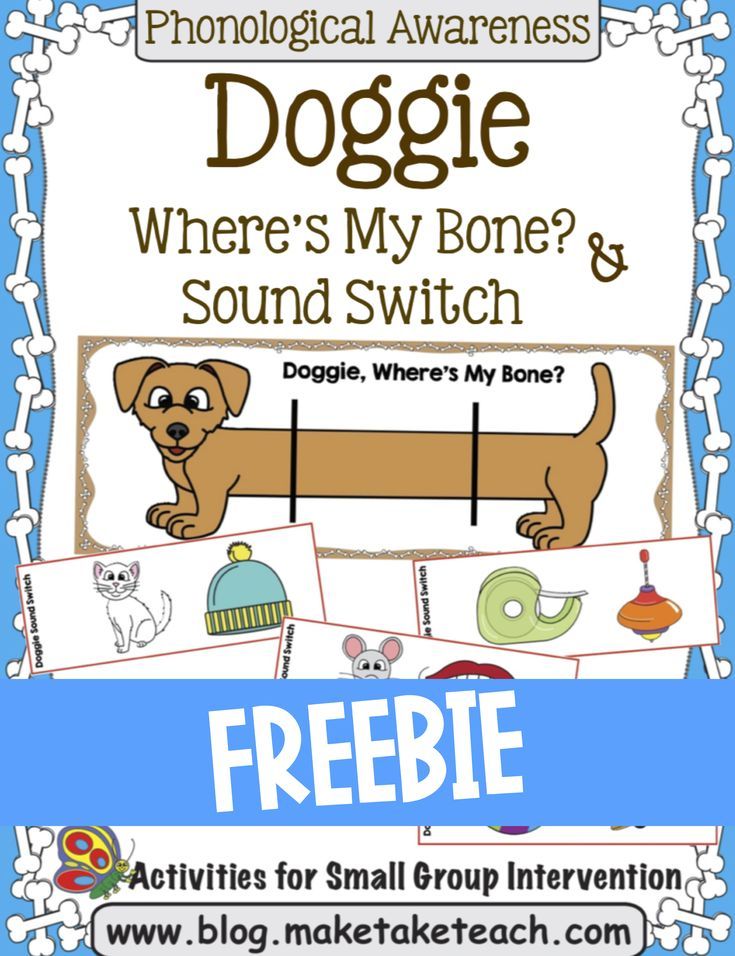
You will need cards with rhyming words or real objects with rhyming names. The words must be familiar or learned beforehand. Each child receives a card, walks around the classroom and says the word out loud until they find a rhyme. If the class is large, then the children match in pairs.
Possible word pairs: flag/bag, cake/snake, duck/truck, star/car, boat/goat, bug/rug, pear/bear, log/frog. The number of words depends on the level of knowledge of the child.
Rhyming word pairs (left to right): flag/bag, cake/snake, duck/truck, star/car, boat/goat, bug/rug, pear/bear, log/frog. Figurines are taken, among other things, from Lego and Kinder surprisesCalling animals
Task for distinguishing syllables.
You will need animal figurines, eg bull, donkey, camel, gorilla, elephant. We hide the animals behind our backs and invite the child to call them in turn, dividing the words into syllables. For example, ca-mel, e-le-phant. Clapping hands helps to clearly separate syllables.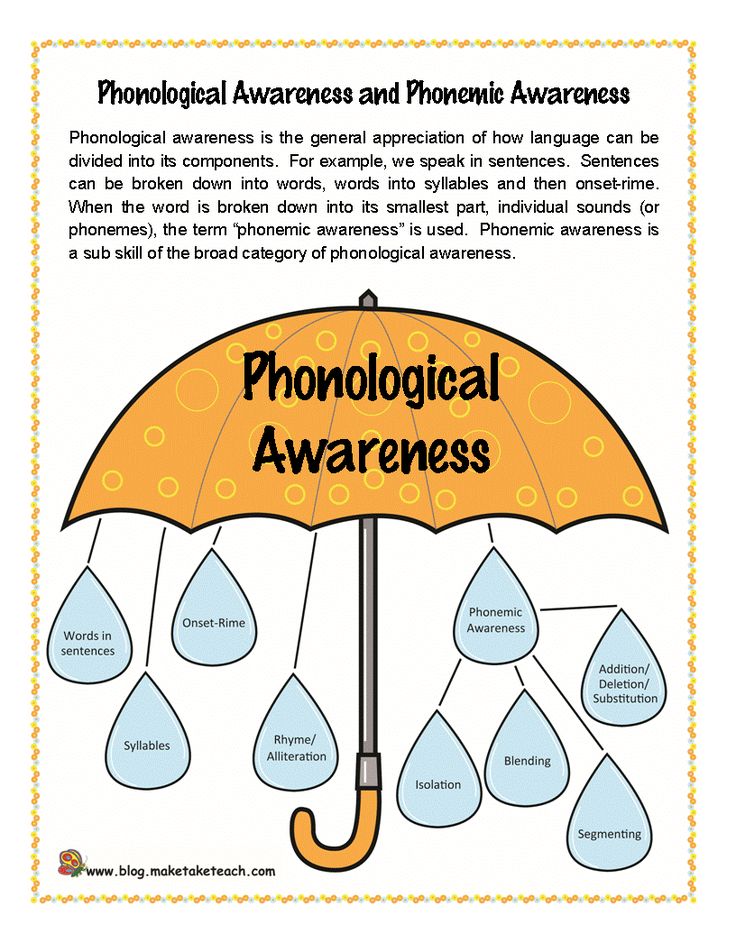
In my lessons the animals usually miss their flight: This is the final call for passenger Donkey. Let's call him together. Don key! don key! Hurry up.
A child calls late passengers on board by syllablesMagic pockets
We practice the ability to distinguish syllables in words and count them.
You will need three or four pockets and a stack of word cards. Say the word in syllables - students will count the syllables and put the card in the appropriate pocket.
The student sorted into pockets the words on the cards Doman with one, two and three syllablesPop-it game
Learning to identify phonemes.
The teacher shows the picture and says the word and then breaks it down into phonemes, eg b-u-s . During the pronunciation of sounds, children push the appropriate number of buttons in the pop-it toy. If pop-it is not at hand, then the number of phonemes can be slammed.
Child pushed three buttons on pop-it after listening to the word busPuppet conversation
Task to merge phonemes into words.